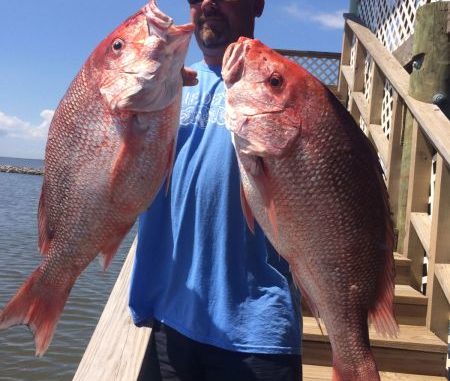
Passage of Alternative 8 means 51.6 percent of allocation will now go to recs
Recreational anglers got tossed a small bone at Thursday’s Gulf of Mexico Fishery Management Council meeting in New Orleans, as members voted to slightly increase recreational anglers’ allocation of red snapper.
Currently, the annual catch limit is divided with 51 percent going to the commercial sector and 49 percent going to recreational anglers.
Buy by passing Alternative 8 to Reef Fishery Management Plan Amendment 28 on Thursday, the Council effectively swapped the percentages between the two sectors.
“It now gives recreationals 51.6 percent, and commercials 48.4,” said Myron Fischer, the director of the Fisheries Research Lab on Grand Isle and the Louisiana Department of Wildlife and Fisheries representative on the Council. “So it does flip-flop those two percentages. It’s not a lot of fish, but in the minds of some recreational fishermen they think it’s a step in the right direction.”
The change came about after National Marine Fisheries scientists recalibrated data from the early Marine Recreational Fish Survey and Statistics (MRFSS) to the Marine Recreational Information Program (MRIP).
“Keep in mind, none of this is supposed to correct problems in the recreational fishery dealing with short seasons,” Fischer said. “All this was doing was correcting the historical catch limits.
“This was never supposed to be a solution for the recreational season being short.”
Fischer said the increase in allocation probably wouldn’t result in any significant increase to the federal red snapper season in the Gulf.
“The estimate is a few hundred thousand pounds a day,” he said. “This was not designed to extend the season.”
A vote on Alternative 9, which would have increased the percentage allotted to recreational anglers even more because of size selectivity, ended in an 8-8 tie. Dr. Roy Crabtree, the southeast regional administrator for NOAA Fisheries, abstained from the vote, Fischer said.
Randy Pausina, head of fisheries for LDWF, called Crabtree’s decision to abstain on Alternative 9 “cowardly.”
“What a coward,” Pausina said. “You have a vote. You abstain when it’s a conflict of interest, or for various other reasons. You don’t abstain not to break a tie.”
The percentage increase going to the recreational sector under Alternative 8 should have automatically happened, and shouldn’t be viewed as a reallocation, Pausina said.
“That’s a recalibration of a historical wrong in the data set, and it should just happen,” he said. “It’s good. It’s a step in the right direction. But it’s not a reallocation, and it shouldn’t be confused with a reallocation.
“It’s a recalibration of the poor data system of MRIP. They finally fixed it and they needed to make this correction. Then we can talk about reallocation.”


